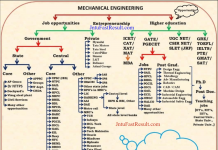TCS TECHNICAL INTERVIEW AND HR ROUND: Here we provided all Commonly Asked TCS Technical Interview and HR Round Questions for TCS interview and hr round questions and in some case, it will be asked in the written test of TCS like programming concepts and coding concept. Once check all the questions and answers for better purposes.
Commonly Asked TCS Technical Interview and HR Round Questions

![]() TCS TECHNICAL INTERVIEW AND HR ROUND part-1
TCS TECHNICAL INTERVIEW AND HR ROUND part-1
TCS TECHNICAL INTERVIEW AND HR ROUND:
All the below questions are previously asked questions and one question asked many times but we don’t repeat all times. So, Commonly Asked TCS Technical Interview and HR Round Questions are in below once check and forward to your social networks and your friends for reference purposes.
What is your strongest programming language (Java, ASP, C, C++, VB, HTML, C#, etc.)?
Point to remember: Before the interview, You should decide your Favorite programming language and be prepared based on that question.
In header files whether functions are declared or defined?
Functions are declared within a header file. That is function prototypes exist in a header file, not function bodies. They are defined in the library (lib).
What are the different storage classes in C?
There are four types of storage classes in C. They are extern, register, auto and static
What does static variable mean?
Static is an access qualifier. If a variable is declared as static inside a function, the scope is limited to the function, but it will exist for the lifetime of the program. Values will be persisted between successive
calls to a function
What is function overloading and operator overloading?
Function overloading: C++ enables several functions of the same name to be defined, as long as these functions have different sets of parameters (at least as far as their types are concerned). This capability is called function overloading. When an overloaded function is called, the C++ compiler selects the proper function by examining the number, types and order of the arguments in the call. Function overloading is commonly used to create several functions of the same name that perform similar tasks but on different data types.
Operator overloading allows existing C++ operators to be redefined so that they work on objects of user-defined classes. Overloaded operators are syntactic sugar for equivalent function calls. They form a pleasant facade that doesn’t add anything fundamental to the language (but they can improve understandability and reduce maintenance costs).
Differentiate between an array and a list?
The array is a collection of homogeneous elements. The list is a collection of heterogeneous elements.
List: An user has to keep Track of next location where memory is stored.
For Array, memory is static and continuous. For List, memory is dynamic and random.
Array: User doesn’t need to keep a track of next memory allocation.
The array uses direct access of stored members; whereas list uses sequential access for members.
what is friend function?
A friend function for a class is used in object-oriented programming to allow access to public, private, or protected data in the class from the outside.
Normally, a function that is not a member of a class cannot access such information; neither can an external class. Occasionally, such access will be advantageous for the programmer. Under these circumstances, the function or external class can be declared as a friend of the class using the friend keyword.
What do you mean by inline function?
The idea behind inline functions is to insert the code of a called function at the point where the function is called. If done carefully, this can improve the application’s performance in exchange for increased compile time and possibly (but not always) an increase in the size of the generated binary executables.
Tell me something about abstract classes?
An abstract class is a class which does not fully represent an object. Instead, it represents a broad range of different classes of objects. However, this representation extends only to the features that those classes of objects have in common. Thus, an abstract class provides only a partial description of its objects.
What is the difference between realloc() and free()?
The free subroutine frees a block of memory previously allocated by the malloc subroutine. Undefined results occur if the Pointer parameter is not a valid pointer. If the Pointer parameter is a null value, no action will occur. The realloc subroutine changes the size of the block of memory pointed to by the Pointer parameter to the number of bytes specified by the Size parameter and returns a new pointer to the block. The pointer specified by the Pointer parameter must have been created with the malloc, calloc, or realloc subroutines and not been deallocated with the free or realloc subroutines. Undefined results occur if the Pointer parameter is not a valid pointer.
What is data abstraction? what are the three levels of data abstraction with Example?
Abstraction is the process of recognizing and focusing on important characteristics of a situation or object and leaving/filtering out the unwanted characteristics of that situation or object.
Abstraction is the basis for software development. It’s through abstraction we define the essential aspects of a system. The process of identifying the abstractions for a given system is called as Modeling (or object modeling).
Three levels of data abstraction are:
1. Physical level: how the data is stored physically and where it is stored in the database.
2. Logical level: what information or data is stored in the database. eg: Database administrator
3.View level: end users work on view level. if any amendment is made it can be saved by another name.
What is the difference between an array and a list?
The array is a collection of homogeneous elements. The list is a collection of heterogeneous elements.
For Array memory allocated is static and continuous. For List memory allocated is dynamic and Random.
Array: User need not have to keep in track of next memory allocation.
List: User has to keep in Track of next location where memory is allocated.
The array uses direct access of stored members, list uses sequential access for members.
What are the differences between structures and arrays?
An array is a group of similar data types but Structures can be a group of different data types
What is data structure?
A data structure is a way of organizing data that considers not only the items stored but also their relationship to each other. Advance knowledge about the relationship between data items allows the designing of efficient algorithms for the manipulation of data.
What are the advantages of inheritance?
It permits code reusability. Reusability saves time in program development. It encourages the reuse of proven and debugged high-quality software, thus reducing problem after a system becomes functional.
what are the two integrity rules used in DBMS
The two types of integrity rules are referential integrity rules and entity integrity rules. Referential integrity rules dictate that a database does not contain orphan foreign key values.
A primary key value cannot be modified if the value is used as a foreign key in a child table. Entity integrity dictates that the primary key value cannot be Null.
Tell something about deadlock and how can we prevent deadlock?
In an operating system, a deadlock is a situation which occurs when a process enters a waiting state because a resource requested by it is being held by another waiting process, which in turn is waiting for another resource. If a process is unable to change its state indefinitely because the resources requested by it are being used by another waiting process, then the system is said to be in a deadlock.
Mutual Exclusion: At least one resource must be non-shareable.[1] Only one process can use the resource at any given instant of time.
Hold and Wait or Resource Holding: A process is currently holding at least one resource and requesting additional resources which are being held by other processes.
No Preemption: The operating system must not de-allocate resources once they have been allocated; they must be released by the holding process voluntarily.
Circular Wait: A process must be waiting for a resource which is being held by another process, which in turn is waiting for the first process to release the resource. In general, there is a set of waiting processes, P = {P1, P2, …, PN}, such that P1 is waiting for a resource held by P2, P2 is waiting for a resource held by P3 and so on till PN is waiting for a resource held by P1.[1][7]
Thus prevention of deadlock is possible by ensuring that at least one of the four conditions cannot hold.
What is Doubly link list?
A doubly linked list is a linked data structure that consists of a set of sequentially linked records called nodes. Each node contains two fields, called links, that are references to the previous and to the next node in the sequence of nodes. The beginning and ending nodes’ previous and next links, respectively, point to some kind of terminator, typically a sentinel node or null, to facilitate traversal of the list. If there is only one sentinel node, then the list is circularly linked via the sentinel node. It can be conceptualized as two singly linked lists formed from the same data items but in opposite sequential orders.
What is debugger?
A debugger or debugging tool is a computer program that is used to test and debug other programs
Const char *p , char const *p What is the difference between the above two?
1) const char *p – Pointer to a Constant char (‘p’ isn’t modifiable but the pointer is)
2) char const *p – Also a pointer to a constant Char
However, if you had something like:
char * const p – This declares ‘p’ to be a constant pointer to an char. (Char p is modifiable but the pointer isn’t)
What is Memory Alignment?
Data structure alignment is the way data is arranged and accessed in computer memory. It consists of two separate but related issues: data alignment and data structure padding.
Explain the difference between ‘operator new’ and the ‘new’ operator?
The difference between the two is that operator new just allocates raw memory, nothing else. The new operator starts by using operator new to allocate memory, but then it invokes the constructor for the right type of object, so the result is a real live object created in that memory. If that object contains any other objects (either embedded or as base classes) those constructors as invoked as well.
Difference between delete and delete[]?
The keyword delete is used to destroy the single variable memory created dynamically which is pointed by a single pointer variable.
Eg: int *r=new(int)
the memory pointed by r can be deleted by deleter.
delete [] is used to destroy an array of memory pointed by a single pointer variable.
Eg:int *r=new(int a[10])
The memory pointed by r can be deleted by delete []r.
What is conversion constructor?
A conversion constructor is a single-parameter constructor that is declared without the function specifier ‘explicit’. The compiler uses conversion constructors to convert objects from the type of the first parameter to the type of the conversion constructor’s class. To define implicit conversions, C++ uses conversion constructors, constructors that accept a single parameter and initialize an object to be a copy of that parameter.
What is a spanning Tree?
A spanning tree is a tree associated with a network. All the nodes of the graph appear on the tree once. A minimum spanning tree is a spanning tree organized so that the total edge weight between nodes is minimized.
Why should we use data warehousing and how can you extract data for analysis with an example?
If you want to get information on all the techniques of designing, maintaining, building and retrieving data, Data warehousing is the ideal method. A data warehouse is premeditated and generated for supporting the decision-making process within an organization.
Here are some of the benefits of a data warehouse:
o With data warehousing, you can provide a common data model for different interest areas regardless of the data’s source. In this way, it becomes easier to report and analyze information.
o Many inconsistencies are identified and resolved before loading of information in data warehousing. This makes the reporting and analyzing process simpler.
o The best part of data warehousing is that the information is under the control of users so that in case the system gets purged over time, information can be easily and safely stored for the longer time period.
o Because of being different from operational systems, a data warehouse helps in retrieving data without slowing down the operational system.
o Data warehousing enhances the value of operational business applications and customer relationship management systems.
o Data warehousing also leads to proper functioning of support system applications like trend reports, exception reports and the actual performance analyzing reports.
Data mining is a powerful new technology to extract data for analysis.
Explain recursive function & what is the data structures used to perform recursion?
a) A recursive function is a function which calls itself.
b) The speed of a recursive program is slower because of stack overheads. (This attribute is evident if you run above C program.)
c) A recursive function must have recursive conditions, terminating conditions, and recursive expressions.
Stack data structure. Because of its LIFO (Last In First Out) property, it remembers its caller so knows whom to return when the function has to return. Recursion makes use of system stack for storing the return addresses of the function calls. Every recursive function has its equivalent iterative (non-recursive) function. Even when such equivalent iterative procedures are written, explicit stack is to be used.
Differentiate between Compiler and Interpreter?
An interpreter reads one instruction at a time and carries out the actions implied by that instruction. It does not perform any translation. But a compiler translates the entire instructions
What is the scope of a variable?
Scope refers to the visibility of variables. It is very useful to be able to limit a variable’s scope to a single function. In other words, the variable will have a limited scope.
What is an interrupt?
An interrupt is an asynchronous signal informing a program that an event has occurred. When a program receives an interrupt signal, it takes a specified action.
What is a user defined exception in Java?
The keywords used in java application are trying, catch and finally are used in implementing user-defined exceptions. This Exception class inherits all the method from Throwable class.
What is Java Applet?
The applet is a java program that can be embedded into HTML pages. Java applets run on the java enables web browsers such as Mozilla and internet explorer. An applet is designed to run remotely on the client browser, so there are some restrictions on it. Applet can’t access system resources on the local computer. Applets are used to make the website more dynamic and entertaining.
What do you know about the garbage collector?
Garbage collection is the systematic recovery of pooled computer storage that is being used by a program when that program no longer needs the storage. This frees the storage for use by other programs
(or processes within a program). It also ensures that a program using increasing amounts of pooled storage does not reach its quota (in which case it may no longer be able to function).
Garbage collection is an automatic memory management feature in many modern programming languages, such as Java and languages in the .NET framework. Languages that use garbage collection are often interpreted or run within a virtual machine like the JVM. In each case, the environment that runs the code is also responsible for garbage collection.
List of TCS And HR Technical Interview Questions & Answers
Why TCS Interview Dates Are Not Released Yet?
Write a Binary Search program?
int binarySearch(int arr[],int size, int item)
{
int left, right, middle;
left = 0;
right = size-1;
while(left <= right)
{
middle = ((left + right)/2);
if(item == arr[middle])
{
return(middle);
}
if(item > arr[middle])
{
left = middle+1;
}
else
{
right = middle-1;
}
}
return(-1);
}
What is function overloading?
This is a feature of C++ that permits us to create several functions with the same name, as long they have different parameters. Take an instance of the following function:
int Add(int nX, int nY)
{
Return nX + nY;
}
What are enumerations?
An enumeration is a data type, used to declare a variable that store list of names. It acts like a database, which will store a list of items in the variable. example: enum shapes{triangle, rectangle}
What is a static identifier?
The static identifier is used for initializing only once, and the value retains during the lifetime of the program/application. A separate memory is allocated for static variables. This value can be used between function calls. The default value of an uninitialized static variable is zero. A function can also be defined as a static function, which has the same scope of the static variable.
What is Cryptography?
Cryptography is the science of enabling secure communications between a sender and one or more recipients. This is achieved by the sender scrambling a message (with a computer program and a secret key) and leaving the recipient to unscramble the message (with the same computer program and a key, which may or may not be the same as the sender’s key).
There are two types of cryptography: Secret/Symmetric Key Cryptography and Public Key Cryptography
What is encryption?
Encryption is the transformation of information from the readable form into some unreadable form.
What is decryption?
Decryption is the reverse of encryption; it’s the transformation of encrypted data back into some intelligible form.
What exactly is a digital signature?
Just as a handwritten signature is affixed to a printed letter for verification that the letter originated from its purported sender, digital signature performs the same task for an electronic message. A digital signature is an encrypted version of a message digest, attached together with a message.
What is Insertion sort, selection sort, bubble sort( basic differences among the functionality of the three sorts and not the exact algorithms)
Related searchs
TCS NINJA INTERVIEW DATES RELEASED AND SELECTED STUDENTS LIST FOR TCS NINJA INTERVIEW
Google Internships, Interview Questions, Careers, Hiring Process, Rules
AP unemployment scheme | Nirudhyoga Bruthi Scheme | Mukhyamantri Yuva nestham Scheme
List of TCS And HR Technical Interview Questions & Answers




i think your performance is bad so they ignore you don’t wary TCS is going to give another opportunity in this month we will update as soon as possible
Dear sir Technical round selected but they have not taken HR round Y ?